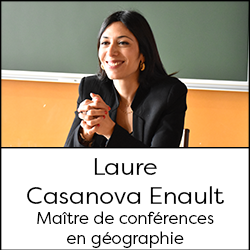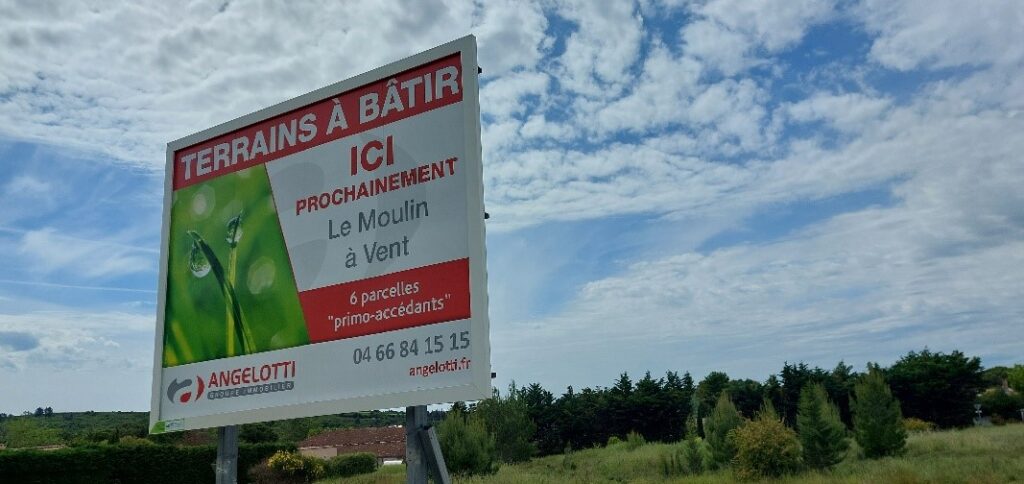[Portrait] Laure Casanova Enault, Senior Lecturer in Geography (UMR 7300 ESPACE)
What is your research about?
My work focuses on land and property ownership Who are the owners and what are their properties, what are the impacts of their management methods (selection of properties, whether or not they are put up for sale, type of transformation, etc.) on urban production and on the future of the areas.
To do this, I am analysing the tax data associated with the land register with two main aims in mind: to reveal the changes taking place in the regions as a result of the dynamics of the land and property markets, and to identify the capacity of public players to intervene to regulate these changes.

What are your current scientific activities?
I am currently involved in three main projects:
- A research programme on multiple ownership of land and buildings funded by theUSHthe PUCA and theIDHEALwhich I coordinate.
>> Multiple ownership of land and property: what are the effects on local markets and what are the regulatory issues?
- A research programme looking at the socio-legal embedding of land markets in France and Luxembourg, coordinated with Antoine Paccoud and funded by the ANR and the FNR.
>> Socio-legal embedding of land markets: A comparative approach to ownership structure and regulatory systems (France-Luxembourg) - DISTRILAND
- The GIF Chair (Geodata, Real Estate, Land) to which I am actively contributing in collaboration with several colleagues (in particular Guilhem BoulayAntoine Peris and Delphine Blanke) and with the support of national public and private partners positioned at different stages of the transformation chain from land to property.
>> Read more
Why did you choose to work in academic research?
My two main motivations were to have the freedom to choose my research topics and the colleagues with whom I will collaborate. I also wanted to investigating territoriesI wanted to take on subjects that were poorly documented and analyse them over a long period of time. During my thesis, I was struck by the extremely short working times set aside for each project in some design offices.
I also wanted to discuss the results of my research with students and local players, and to ensure that they resonated with decision-makers to improve planning and the quality of life in the region.
What advice would you give to students who want to do research?
I'd like to invite all students to see research as a way of life. a fast-moving professional field with its roots in societyThis goes against the grain of certain ideas that are sometimes put forward.
There are many issues at stake, from access to housing and natural areas to the implementation of the environmental transition. They call for responses based on scientific reasoning.
My advice to those who want to embark on this path is to believe in their chances of success, despite the reduction in posts in Higher Education and Research.
There are also opportunities to do research in structures other than just universities, which is something that our courses are designed to raise awareness of, particularly the Master's degree in engineering (CMI) : https://formations.univ-avignon.fr/formation/diplome-universitaire-cmi-ingenierie-durabilite-territoires/.
What object or image from your business best illustrates you?
This type of sign is a valuable source of information, as it contains details about the land, often relating to its sale price, the seller or the type of buyer sought. It is also a witness to the land transactions that are transforming areas, and which are often invisible until they are built on.

UMR 7300 ESPACE
Created in 1997, the ESPACE laboratory (Étude des Structures et des Processus d'Adaptation et des Changements de l'Espace) is a joint research unit (UMR 7300) which brings together three universities in the Provence-Alpes-Côte-d'Azur region with the CNRS: Avignon University, Aix-Marseille University and Université Côte d'Azur. In addition to these three main sites, there is a 'workshop zone' at Saint-Christol-lès-Alès in the Cévennes, where hydro-meteorological measurements have been carried out for over 30 years, particularly on water resources.
>> Read more
The portraits
Updated on 24 June 2024